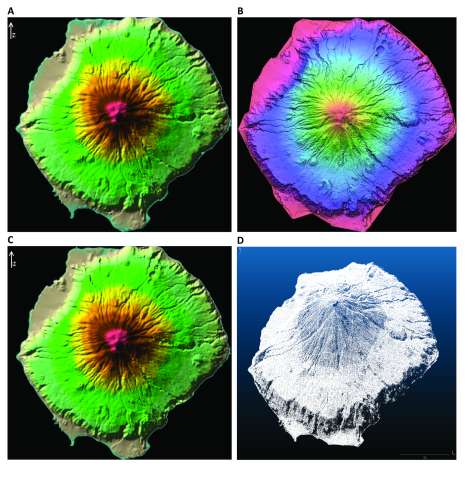CORE BUSINESS
The Team Geodesy and Geospatial Engineering specializes in geodetic high-precision measurements and Earth Observations (EO) within various multi-scale geophysical, environmental and engineering applications. We also investigate improvements in the involved measurement techniques, e.g. GNSS, SAR remote sensing, photogrammetry and LiDAR, and their data analyses (machine learning/deep learning).
Our applications include GNSS-derived crustal deformations for studies of sea-level rise, glacial isostatic adjustment and plate tectonics, GNSS-derived atmospheric parameters for applications in meteorology and climatology, multi-platform digital photogrammetry and LiDAR for the computation of high resolution digital terrain/elevation models for flood hazard modelling and city modelling, high-precision multi-sensor geodetic monitoring for infrastructure applications, multi-sensor 3D reality capture for Building Information Models (BIM) and digital twins.
PRODUCTS & SERVICES
We are GNSS specialists and can provide a variety of related products (station coordinates, atmospheric parameters and satellite orbit and clock products as well as Earth Rotation Parameters). In the past we have provided coordinate solutions for reference GNSS networks on national to global scales. Our background in remote sensing and geospatial engineering allows also for classic topographic survey products, the generation of digital terrain and elevation models, building information models (BIM), city models, as well as deformation maps of geophysical features/infrastructure and subsidence/uplift maps of cities and regions. We are an International GNSS Service (IGS) Tide Gauge Benchmark Monitoring (TIGA) working group analysis and combination center. We provide near real-time hourly GNSS tropospheric products to EUMETNET eGVAP for assimilation into numerical weather prediction models.
TECHNICAL MEANS
We operate permanent GNSS stations at Findel Airport and Campus Kirchberg (G.D. Luxembourg), Walvis Bay and Lüderitz (Republic of Namibia) and the South Atlantic Ocean islands of South Georgia (South Georgia and the South Sandwich Islands), St. Helena and Tristan da Cunha (Ascension, St Helena and Tristan Da Cunha). We maintain a variety of scientific GNSS software (Gamit/Globk, Bernese GNSS Software, PRIDE, Napeos, RTKLib), as well as various geospatial software suits (e.g. Leica GeoOffice, Trimble Business Center, Hexagon Geospatial Suite, PCI Geomatica, ESRI ArcGIS, nFrames SURE, PointCap Pro 3D), which we run on our in-house workstations or on the UL High Performance Computing Facility (ULHPC). For projects also available are our GNSS RTK kits, reference GNSS kits, terrestrial laser scanners, a drone and state-of-the-art surveying equipment.
MAIN CUSTOMERS
Administration du cadastre et de la topographie (ACT), Administration de la navigation aérienne (ANA) – MétéoLux, RSS-Hydro S.a.r.l., National Oceanography Centre (NOC), British Antarctic Survey (BAS), GeoForschungsZentrum Potsdam (GFZ), International Oceanographic Commission (IOC), Hartebeesthoek Radio Astronomy Observatory (HartRAO), Astronomical Institute University of Bern (AIUB), University College London (UCL), Luxembourg Institute of Science and Technology (LIST), Maxar/DigitalGlobe, PCI Geomatics, Hexagon Geospatial
MAJOR SPACE PROJECTS
Participation in NASA Frontiers Development Lab (FDL) in 2017, 2018 and 2019:
Lunar Resources (Water & Volatiles)
Space Weather Challenge 02, Improve ionospheric models using GNSS/GPS data







